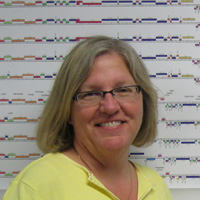Welcome to the forums at seaphages.org. Please feel free to ask any questions related to the SEA-PHAGES program. Any logged-in user may post new topics and reply to existing topics. If you'd like to see a new forum created, please contact us using our form or email us at info@seaphages.org.
Recent Activity
All posts created by debbie
| Link to this post | posted 10 Dec, 2025 14:44 | |
|---|---|
|
|
Jaya, Of course! What you put on the plate is what the yield will be. Best, debbie |
Posted in: Phage Discovery/Isolation → Titer after webbed-plate?
| Link to this post | posted 10 Dec, 2025 01:54 | |
|---|---|
|
|
For 2025 Genomics Workshop, Lindsay Constantini (from NCCU), was able to get a DNA Master installation to work on Crossover. Attached are the ChatGTP steps and some troubleshooting she used to install via Crossover on her MacOS. best, debbie |
| Link to this post | posted 08 Dec, 2025 19:10 | |
|---|---|
|
|
HI all, I think that the answer is in this post above. Please read above. In general, the 2 genes of terminase do different things. It is a good time to check the literature on this. There are many articles that articulate what these genes do. Here is an article that describes a non-canonical display of the Terminase, large subunits parts. Zhao H, Christensen TE, Kamau YN, Tang L. Structures of the phage Sf6 large terminase provide new insights into DNA translocation and cleavage. Proceedings of the National Academy of Sciences of the United States of America. 2013;110(20):8075-8080. doi:10.1073/pnas.1301133110. The small terminase is more elusive, and sometimes we cannot find it. It can also be part of the large terminase gene. debbie |
| Link to this post | posted 02 Dec, 2025 02:06 | |
|---|---|
|
|
Hi all, This is where comparative genomics is helpful. Blastn the genome and you can see that right end of the genome is cobbled together and not tightly conserved across the cluster. So you won't see blastp hits for your genes. Blastn the genes in question and one has some hits and one doesn't. Put the whole picture together and the data says, the reason that no one else has called these genes is because they don't have the same sequence (38709). But gene 76 (38909 is found in LittleTokyo and Antrice. what did they call, but more importantly, look at their gen prediction data (at least GeneMark)to see if that segment has coding potential. I think you will likely want to call them, but I have not fully investigated them. Let me know if you want to chat about them. Using the comparative data should help here. Best, debbie |
| Link to this post | posted 19 Nov, 2025 02:06 | |
|---|---|
|
|
Nic, Check out this EM. or phage Piku. Not sure what is in the picture is the phage, but I think I see similar structures in these micrographs. debbie |
Posted in: Phage Biology → what on earth is this thing (TEM)
| Link to this post | posted 18 Nov, 2025 02:32 | |
|---|---|
|
|
Always! |
Posted in: Lysogeny/Immunity → Growing Liquid Cultures for lysogens
| Link to this post | posted 14 Nov, 2025 19:13 | |
|---|---|
|
|
Beth, Hmm. If you original colony was surrounded by phage, you may be picking up exogenous phage. So streak it 3 times on agar. Then grow a culture and plate. Is the background filled with plaques? You can perform a streak of that bacteria on a plate of wild type bacteria, but use the culture to make your lysogen plate for testing. If that is what you have done, then your lysogen is very leaky…. You may never get a culture grown, but if you do and you plate, and it is a webbed looking plate. sometimes the spot titers will still show up, even in the mess. Have you tried to grow up the lysogen using a phage seeded plate (instead of cultures the cells from a spot). if so, do you have %lysogeny numbers? Just all something to think about. debbie |
Posted in: Lysogeny/Immunity → Growing Liquid Cultures for lysogens
| Link to this post | posted 14 Nov, 2025 18:27 | |
|---|---|
|
|
Hi Beth, Have you colony purified the lysogen? You want to remove exogenous phage from the bacteria that you are growing in a liquid culture. If you are starting from a plate seeded (or loaded) with phage, you will get lots of killing in a liquid culture. Best, debbie |
Posted in: Lysogeny/Immunity → Growing Liquid Cultures for lysogens
| Link to this post | posted 08 Nov, 2025 03:38 | |
|---|---|
|
|
Ping, I would not do that. The lysogen could technically (though unlikely) be to the other phage. It would be helpful to have a pcr designed to show integration….. I would recommend testing other DC1 phages on the lysogen. debbie |
Posted in: Lysogeny/Immunity → Superinfection immunity
| Link to this post | posted 07 Nov, 2025 22:21 | |
|---|---|
|
|
Ping, My best suggestion is to plate for single plaques, and pick a plaque that represents the majority of phenotypes THAT IS WELL ISOLATED FROM OTHERS PLAQUES and make a new stock. You can PCR to confirm, but not rule out contamination. When purifying, pick early. I hope that makes sense. best, debbie |
Posted in: Lysogeny/Immunity → Superinfection immunity


 30Kb
30Kb